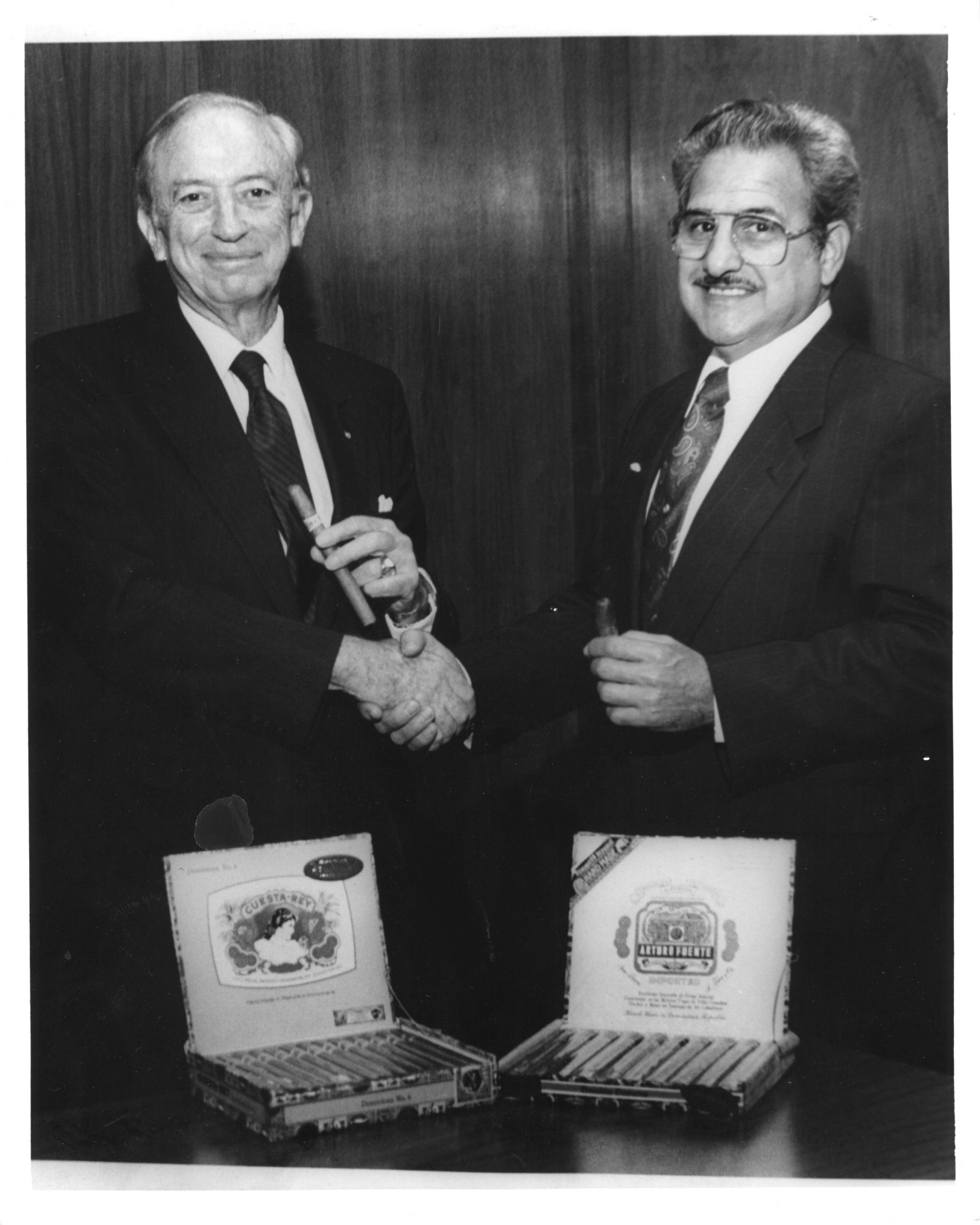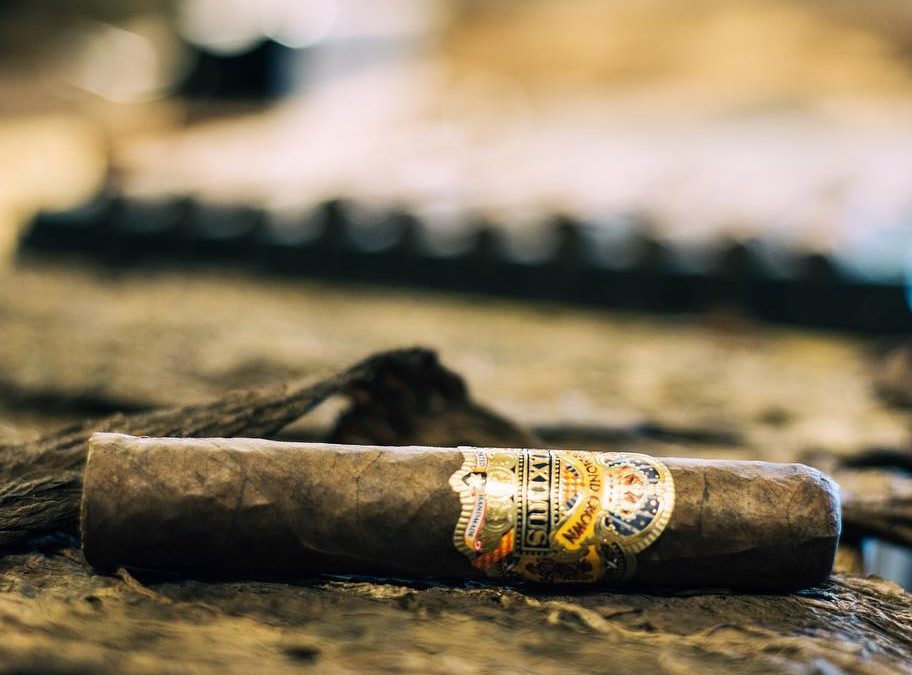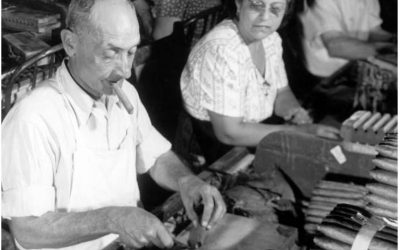Being a one-hundred and twenty-six year old company, J.C. Newman Cigar Co. has a historical portfolio that includes almost as many brand names as the years the company has operated. Most of these brands feature a romantic backstory tied to the history or legacy of the company. For example, A-B-C was the first cigar brand produced by J.C. Newman. It was named after a streetcar line that ran near J.C. Newman’s family home in Cleveland, Ohio.
Another example is Cuesta-Rey #95. One of the longest, continuously produced J.C. Newman brands, Cuesta-Rey was named after the bottles of Chanel No. 5 Stanford Newman often purchased for his wife, Elaine.
The Diamond Crown Maximus confounds this pattern. The story in our materials is that the cigar was conceived as a full-bodied companion to the mild Connecticut shade wrapper of the Diamond Crown Classic. The name Maximus is so bold, yet it leaves out the much bolder history behind the brand. Its name lacks the immediate historical connections of the Diamond Crown Julius Caesar or The American, but the Diamond Crown Maximus tells a powerful story of the collaborative process behind the very best premium cigars in the world and the relationships between the three biggest families in the cigar industry (the Newmans, the Fuentes, and the Olivas).

MAXIMUS BEGINNINGS
Stanford Newman noticed a consumer trend towards fuller-bodied cigars immediately after the cigar boom ended in the late 1990s. Stanford began working with his sons, Eric and Bobby, to develop a cigar that maximized the sensory experience of the American cigar smoker. Originally the Cuesta-Rey Maximus, the cigar soon found a home in the Diamond Crown line as the Newmans sought to develop a whole portfolio of super premium cigars. For the perfect tobacco blend, Stanford worked closely with his old friends Carlos Fuente, Sr. and John Oliva, Jr.

The Hands of Time
Everyone had a role to play in the development of this cigar. The Oliva family grew the choicest sungrown wrapper tobaccos at their farm in the El Bajo growing region of Ecuador. The Fuente family blended and rolled the cigar at Tabacalera A. Fuente in the Dominican Republic. The Newman family designed the packaging, label, band, and marketing strategy for the cigar back home in Tampa. Carlos Fuente, Sr. suggested the cigar be rolled as a 50 ring gauge instead of the Diamond Crown Classic’s 54 ring gauge to better accentuate the Ecuadorian sungrown wrapper’s flavor. One of his first major projects with his family business, Drew Newman worked closely with Carlito Fuente to design an “M”-shaped box (modeled after a Cuesta-Rey #47 box with some wooden panels attached on to give it the façade of an “M”), a hallmark of early production runs of the cigar.
They say a premium cigar takes three years and over two-hundred hands to prepare from start to finish. The development of a cigar brand requires tenfold more effort. Each critique or revision of the cigar was a refinement to the cigar, just as age mellows the tobacco and creates a finer cigar. Many cigar smokers take for granted the fact that manufacturing any premium cigar is a massive undertaking. The creative process behind a truly great cigar is a process of collaboration, deliberation, sacrifice, and patience. This is the story that is rarely told. The cigar bands and marketing romance catch the eye, but the stories of the men and women who created the cigar is what wins the heart.

About Holden Rasmussen
Holden Rasmussen is a Museum Associate at the “El Reloj” Factory Museum. His duties include conservation, collection management, gift shop sales, and docent work. He is a new college graduate who has worked and volunteered at museums and archival facilities in different parts of the country. Holden enjoys the American outdoors, French electronic music, Yugoslav militaria, Japanese comics, and Cameroon tobacco.
J.C. Newman’s Marion, Ohio Cigar Factory
The Marion factory produced several million cigars a year, its humidors having room for six-hundred thousand cigars at any given time.
The Cartabon: Cigar Unions and Factories in Tampa
To a large extent, Tampa cigarmaker unions and factories were integral to setting the standards for modern cigar production.
The Critical Role of Bunny Annis
One of the most important, of these reasons is Julius Caeser Newman’s visit to an old family friend, Julius Benjamin “Bunny” Annis.



